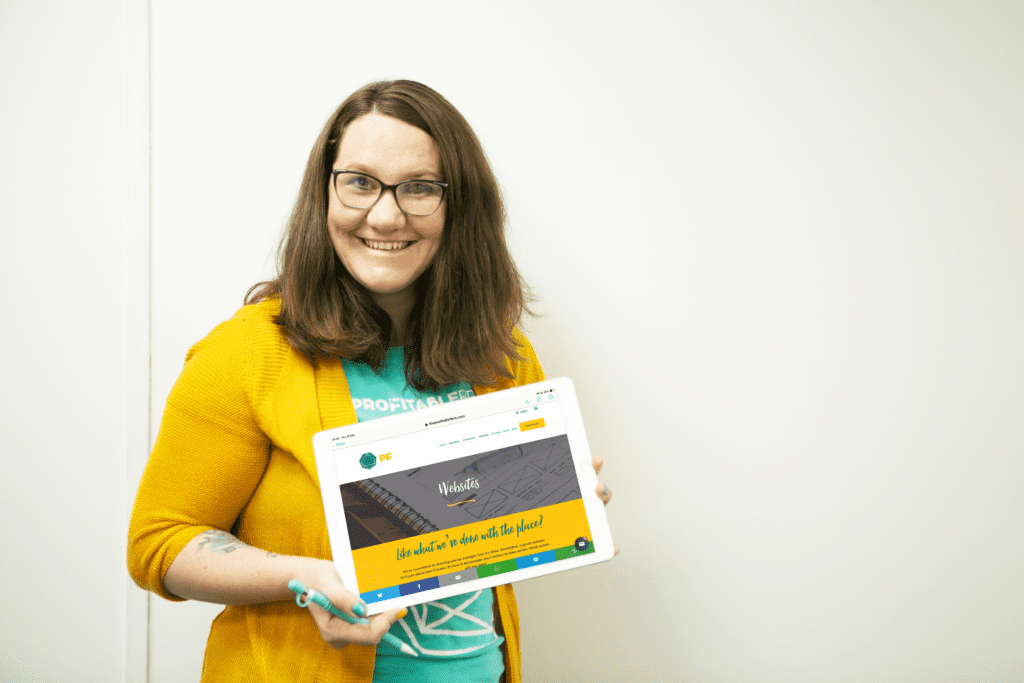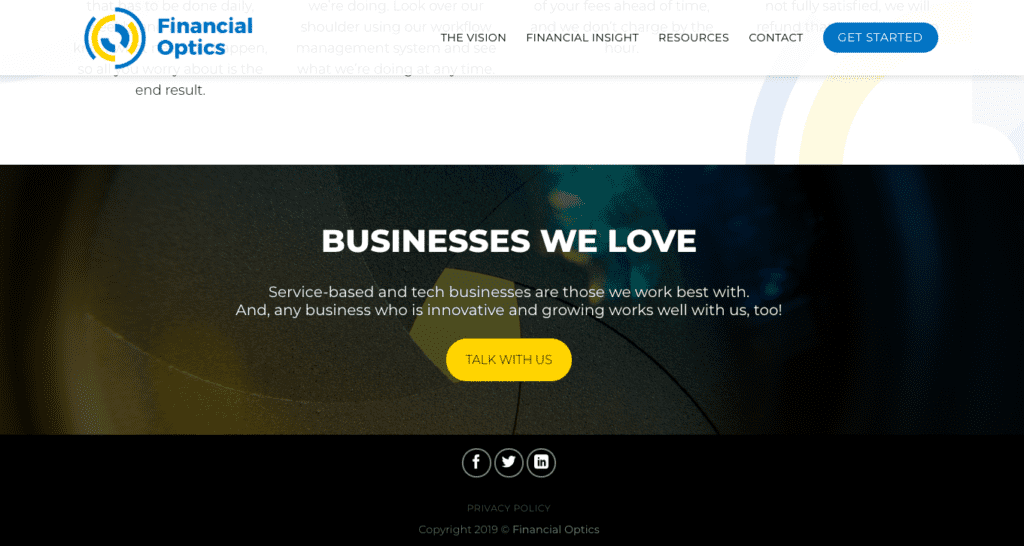 Your website is a hub to which you are consistently driving people from all of your marketing. It’s the one place where a client ought to be able to find all the information they need to make an educated decision. They want to know who you are, if you can help solve their problem, and how much it’s going to cost them.
Your website is a hub to which you are consistently driving people from all of your marketing. It’s the one place where a client ought to be able to find all the information they need to make an educated decision. They want to know who you are, if you can help solve their problem, and how much it’s going to cost them.
Remember, they’ve likely searched up to 4 other accountants already and if they haven’t, they plan to. They have taken notes and are shortlisting!
When someone is looking for an accountant it means one of three things:
1) They had a bad accountant and need a new one.
2) They have no idea what they are doing with their money, and know they need help.
or
3) They recognize the importance of an accountant in making sure a business is sustainable and profitable.
They are looking for you.
Here’s how to make your website your most powerful tool.
Your website is set apart by who you (and your firm) are.
Your website is yours. It’s owned by you and you alone – it won’t be shut down or disappear or be invisible by what someone else does (as is the danger with social platforms like Facebook or LinkedIn).
The unique voice that you and your team have, and the specialized qualities you bring to the table will draw in the right type of clients. The more defined you are in these areas, the more likely it is that your clients will be the absolute best fit for you and your firm.
How do you define these areas well?
- Find a niche. Figure out who you want to serve. This could come from the experience you and/or your team have in a certain industry. It could also come from considering the people you really love working with. What types of business owners inspire you? Who do you want to help? Once you’ve identified this, the content on your website becomes all about this niche audience. You are answering the questions they have and helping them see the value you create for their business because you know their industry well. Sign up here for Karen’s regular niche marketing tips.
- Define your voice. It might take a bit of time to identify your voice, but it’s there. What we mean by your tone of voice is the way your business talks. Think about when you read a book and you hear the narrator’s voice in your head. You start to know how they feel, what it would be like to be in the room with them, things like that. Your tone of voice needs to be consistent with who you are in person. If you are a more conservative person or firm in real life, your writing style and the copy on your website will be a bit on the conservative side. If you’re more laid back, your writing will reflect that as well. When you’ve nailed your voice, it impacts everything you put on your website. People will have a good idea of who you are and what you stand for just by reading your content. We’ve talked more about tone of voice and how to find it here.
- Identify the value you bring and communicate it. If you’ve got years of experience in the craft beer industry, and your target market is craft breweries, say it. Better yet, shout it from the rooftops! Use your knowledge and expertise to let your clients know that you know what you’re talking about. Create case studies of your ideal clients that tell the story of their business and how you worked with them to help them succeed. Add these case studies and testimonials to your website.
Take these things and apply them to every single piece of marketing that you put out into the universe. After defining these areas, you are well on your way to becoming the worst kept secret in Google’s search engine.
Your homepage is a mini version of your entire website.
When someone visits your homepage it’s your opportunity to communicate who you are and what you do.
Here’s a few tips to help you give them the best taste of your firm:
- Think of your homepage as an outline. Hit all the main highlights of who you are and what you do and fill in the outline with every other landing page you create. A good way to do this is to write out a physical, detailed outline of everything you would want to communicate on your website. Then break it down to the bare bones and use that as the framework for your homepage.
- Add a video to your homepage to increase engagement. People skim more than they read. People watch more than they skim. Just like when the tv stars took over and radio shows slowly phased out, we’ve yet again entered a new era. According to Forbes Magazine, 95% of viewers are more likely to remember a call to action after watching a video, as compared to the 10% that read it in text format. If you need some tips on getting started with video read this blog. It’s okay if you don’t get every word perfect or if your hair is a little unkempt – people are seeing the real you.
A call to action (CTA) helps your viewer know what to do next.
What do you want the viewer to do when they’ve scrolled through the page? Learn more? Book a call?
Figure this out and make the CTA button clear and bold so they know what to do next. Make sure that your CTA does what it’s supposed to do. If it says “Book a call” make sure to send them directly to a phone number. If it says, “Download our guide,” send them to download the guide. Clear, single calls-to-action buttons will drive more people to click than if it’s a mixed message.

Fresh content benefits all of your marketing.
Consistent blogging and content will keep your website fresh and is a great way to boost SEO and drive people to your website.
It’ll also show your clients that you are actively involved in their day-to-day needs and concerns: and is a great chance to keep showcasing your expertise.
Now by consistent I mean posting at least once a month but ideally once a week. If you’re struggling for content have a think about what questions your clients are asking and answer them. The book “They Ask, You Answer” by Marcus Sheridan is a fantastic tool to guide you through this method.
True investment in SEO is necessary and it’s a long game.
SEO is a buzzword for a reason – if done rightly, it works. To be clear, don’t be fooled by anyone that tells you your ROI will triple in one month if you pay them to do SEO work for you. Someone’s ROI is tripling, but let us assure you it’s not yours.
We’ve had clients post a couple blogs during tax season that sent their blog engagements skyrocketing to over triple the views of their homepage. Why? Because it was tax season and people were searching for information.
Our clients knew what they were doing when they crafted the title and content of that blog post and the proof is in those numbers.
But how many of those 800 unique pageviews will become clients immediately upon reading that blog? Probably zero. How many of those unique viewers might come back and read another blog if they found value in the first one? Maybe 25. How many will eventually become customers? One. Maybe two.
See what we mean about the long game? SEO is important (and necessary) but you won’t get results overnight.
Don’t be put off by the term, there’s plenty you can do to give yourself a boost. We’re running a free SEO Masterclass in September, the waiting list is open now.
Be clear on your website to attract the right clients
At the end of the day your website needs to communicate effectively who you are, what you do, and how you will solve the clients’ problems.
Investing time and effort to make sure that’s done properly is the best move. Your website is the most integrated tool in your marketing toolbox and when done right, will help you attract the type of clients you want.

